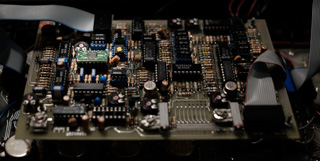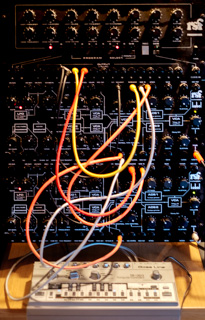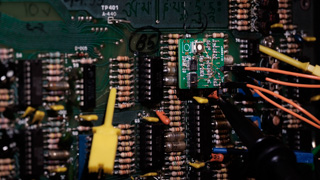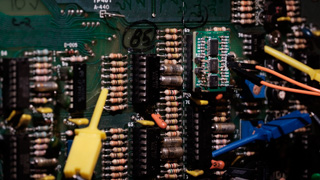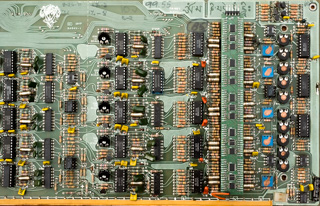  The world's first synthesizer downgrade IntroductionThis modification for the Sequential Circuits Prophet-5 reverts the Rev 3 sonically to the earlier, much bigger-sounding Rev 2! The two Prophet 5 versions sound different due to the nearly complete redesign of the voice architecture to use Curtis’ CEM chips instead of Dave Rossum’s SSM chips for the transition of the Rev 2 to the Rev 3 model. This difference in sonics has made the Rev 2’s more desirable - and significantly more expensive.Rev 2The main factor in the Rev 2’s superior sound is its filter chip, the now revered SSM2040 which features unique asymmetric distortion. Due to the inverting nature of its four filter stages, this asymmetric distortion switches direction after each stage, while the input signal propagates through the SSM2040 and is progressively filtered. An excellent benefit of this is that it makes synthesizers built around it much more moldable from a sound-designer’s perspective as the filter reacts dynamically to outside parameter changes. For example, increasing the level of a waveform changes resonance, the sum of waveforms sound different than their individual parts and at higher levels, the pulse width also controls the resonance symmetry. The oscilloscope plots in the 'waveforms' section illustrate all this.Rev 3The CEM3320 filter chip of the Rev 3 features four linearized filter stages which are pretty much distortion free - a remarkable engineering feat, but resulting in an almost digital, less animated sound. Another issue is that internally it works on only -2V negative instead of the full -15V of its predecessor. To accommodate this, level shifting circuitry was added that basically sums an unfiltered voltage straight from the power supply with the audio signal of each filter stage. This pollutes the audio with all the noise and hum generated by the power supply, as well as all the junk from all of the ICs that share this supply.HistoryThe idea to ‘downgrade’ a Rev 3 to use SSM chips started more than a decade ago, but was put on hold due to the scarcity of the discontinued SSM2040 chips. These rare old parts should be kept for repairs instead of being used for new designs. While, there are schematics circulating on the net of discrete-component clones, none of them come close to the real thing as they all lack key aspects* of it design and ignore the thermal effects that prevent non-integrated versions from working properly.Now that Sound Semiconductor is releasing their new SSI2140 chip, which is a redesign of the SSM2040 with some extras by its original designer Dave Rossum, this project finally became feasible. A/B comparison, done by mounting an engineering sample of this new SSI2140 in a RSF Kobol Expander (See pictures of the adapted circuit board and test setup) synth and comparing it with another unmodified Kobol Expander showed that its sound is absolutely dead on. *See footnote #28 on page 22 of the AN701 application note on filter design with the Sound Semiconductor SSI2164 IC. FeaturesFully working prototypes have been built and tested, and have the following features:
WaveformsResonant behaviour of the filter is affected by the waveform's amplitude:    Resonance at low level sawtooth and high level sawtooth. The waveshape also affects it:      Pulse width controlling resonance symmetry at higher levels. Summing waveforms results in unrelated new shapes depending on the amplitude:  Sum of Sawtooth, Square and Triangle wave. DemoIf the world wasn't turned upside down a while ago, you should have been able experience it first-hand at:
(Skip back to the beginning of the video to see how it is installed) and this short one for now: More extensive ones should appear once the pre-production models are out. Pre-orderREV -1 is available now. Price is 333€. Shipping cost is 25€ worldwide Alternatively you can also buy it at Syntaur here: https://syntaur.com/Items.php?Item=REV1 Copyright © Cask Strength Electronics 2024 |

